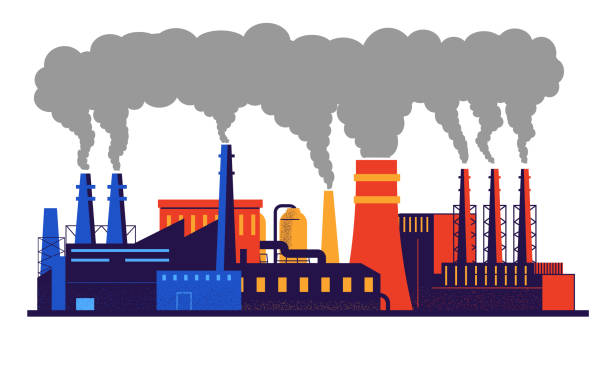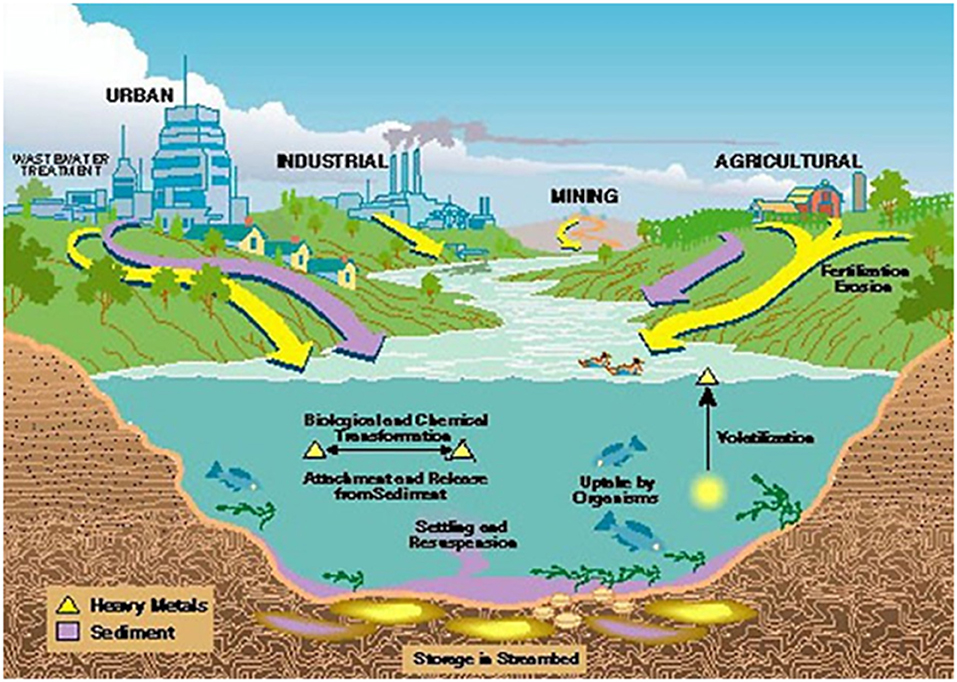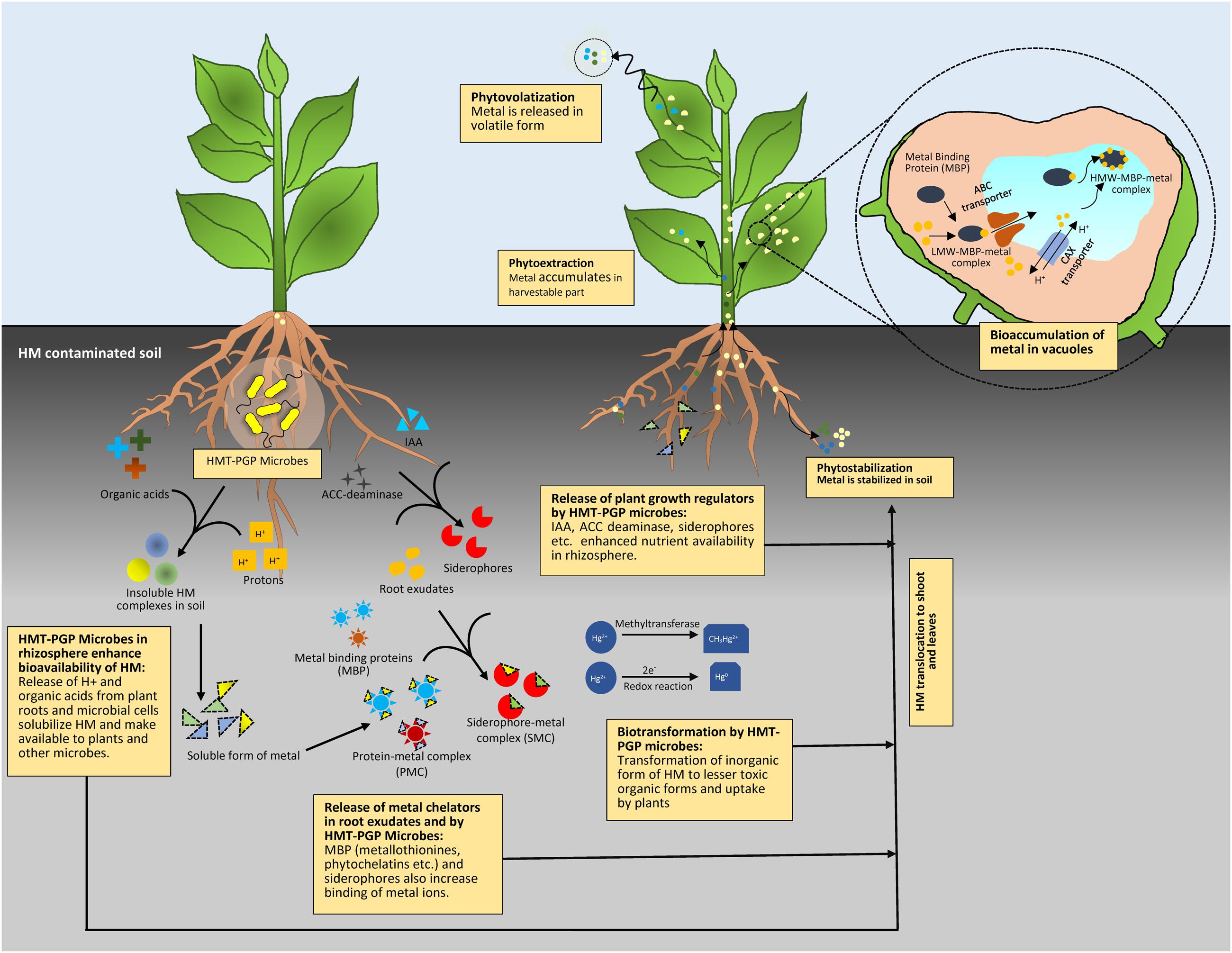
Minimizing Exposure to Heavy Metals and Toxins in the Environment
Introduction
In today’s world, heavy metals and toxins have become an inescapable part of daily life. These substances infiltrate our surroundings, from the air we breathe and the water we drink to the soil that nourishes our crops and the products we use daily. Industrialization, agricultural practices, and modern lifestyles have significantly contributed to the pervasive presence of these harmful agents.
The Ubiquity of Toxins
Heavy metals like lead, arsenic, and mercury, along with synthetic chemicals like pesticides and industrial pollutants, are omnipresent in our environment. Air pollution carries microscopic particles of lead and other toxins into our homes. Water supplies, particularly in areas with aging infrastructure or unregulated wells, are often contaminated with heavy metals such as arsenic. Soil—especially in urban and agricultural zones—harbors residues of pesticides and industrial chemicals that can enter the food chain. Everyday products, from cleaning agents to cosmetics, add another layer of exposure, creating a web of unavoidable contact points for these substances.
Health Risks
The long-term effects of exposure to heavy metals and toxins are profound, especially on brain health. Lead, for instance, has been linked to cognitive impairment, developmental delays in children, and an increased risk of neurological disorders like Alzheimer’s disease. Arsenic exposure has been associated with cancer, cardiovascular diseases, and endocrine disruption. Glyphosate, a commonly used pesticide, has raised concerns about its potential link to neurodegenerative diseases such as Parkinson’s. These substances, even in small quantities, can accumulate in the body over time, causing chronic health issues that often manifest years after exposure.
The human brain, a highly sensitive and complex organ, is particularly vulnerable to these toxic substances. Cognitive decline, memory issues, and heightened risks of dementia are just a few of the alarming consequences. Beyond individual health, the broader societal implications—such as increased healthcare costs and diminished quality of life—highlight the urgent need for collective awareness and action.
Purpose
This article aims to empower readers with knowledge and actionable strategies to minimize their exposure to heavy metals and toxins. By understanding the sources of these harmful agents and adopting practical measures, individuals can take meaningful steps to protect themselves and their families. The focus is not only on reducing immediate risks but also on fostering long-term well-being and resilience in the face of an increasingly polluted world.
Through informed choices and simple yet effective interventions, it is possible to mitigate the impact of these toxins. Together, we can work toward creating healthier environments and advocating for systemic changes that prioritize public health and sustainability.

Understanding the Key Sources of Heavy Metals and Toxins
To effectively minimize exposure to heavy metals and toxins, it is crucial to understand their primary sources. These substances originate from a mix of historical, industrial, and lifestyle factors, creating multiple pathways for exposure.
- Lead
Lead has been a persistent environmental hazard, largely due to its extensive use in the 20th century. Despite regulations limiting its application, its legacy continues to affect public health.
- Historical Sources: Leaded gasoline, widely used until the late 20th century, has left a lasting imprint on the environment. Residual lead particles in soil and air, particularly in urban and industrial areas, continue to pose risks. Children playing in contaminated soil are especially vulnerable, as are individuals exposed to airborne dust carrying lead particles.
- Homes Built Before 1978: In the United States and many other countries, homes constructed before 1978 often contain lead-based paint. Over time, this paint can chip or deteriorate, contaminating household dust and surrounding soil. These particles are easily ingested or inhaled, particularly by young children, whose developing brains are highly sensitive to lead toxicity.
- Plumbing: Aging infrastructure remains a major concern. Lead pipes, solder, and faucets can leach lead into drinking water, with higher concentrations often found in hot water. This risk is exacerbated in areas with old plumbing systems, making water safety a critical issue.
- Arsenic
Arsenic is a naturally occurring element, but human activity has amplified its presence in the environment, leading to widespread exposure.
- Natural Origins: In many regions, arsenic is naturally present in soil and groundwater. This is particularly concerning in areas where drinking water sources are unregulated or untreated, leading to chronic exposure through contaminated water.
- Industrial Sources: Arsenic is widely used in various industries, including agriculture (insecticides and herbicides), construction (wood preservatives), and manufacturing (glass, electronics, and pigments). These activities release arsenic into the environment, where it can persist for decades.
- Lifestyle Contributors: Smoking introduces arsenic into the lungs, not only affecting smokers but also exposing those around them to secondhand smoke. Certain foods, such as rice and seafood, are also significant sources. Rice absorbs arsenic from contaminated water and soil, while some seafood contains organic arsenic compounds, raising concerns for frequent consumers.
- Glyphosate (Roundup)
Glyphosate is one of the most commonly used herbicides globally, both in large-scale agriculture and home gardening. Its widespread application has made it a major source of concern.
- Agricultural and Household Use: Glyphosate is sprayed extensively to control weeds, not only in commercial farms but also in home gardens and public spaces like parks. This widespread use increases the potential for human exposure.
- Routes of Exposure: Direct contact with glyphosate can occur during spraying, through inhalation of airborne particles or absorption via the skin. Residues on fruits, vegetables, and grains can further contribute to dietary exposure, making food another significant pathway.
- Emerging Research: Though glyphosate was initially believed to be relatively safe for humans, recent studies have raised concerns about its potential links to neurodegenerative diseases such as Parkinson’s. Its impact on gut microbiota and other systems is also under investigation, adding to the urgency of reducing exposure.
By identifying and understanding these sources, individuals can take proactive steps to minimize their contact with lead, arsenic, and glyphosate. The next section will provide actionable strategies to mitigate these risks and foster a healthier lifestyle.

Practical Steps to Minimize Exposure
While heavy metals and toxins like lead, arsenic, and glyphosate are pervasive, there are actionable steps you can take to reduce your exposure. By adopting simple but effective habits and making informed decisions, you can create a safer environment for yourself and your family.
- Lead
- Home Maintenance
- Inspect for Lead Paint: Homes built before 1978 may contain lead-based paint. Professional inspections can identify areas of concern.
- Encapsulation or Safe Removal: Instead of removing lead paint (which can release harmful particles), encapsulation is a safer alternative. When removal is necessary, it should be handled by certified professionals to prevent contamination.
- Regular Cleaning: Dust and debris from deteriorating lead paint often accumulate on floors and windowsills. Clean these areas with damp cloths or mops to prevent airborne particles.
- Hygiene Practices: Wash hands frequently, especially after handling surfaces that might contain lead dust, such as windows, railings, or soil.
- Indoor Shoe-Free Zones: Designate areas where shoes are not allowed indoors to avoid tracking in lead-contaminated soil from outside.
- Water Safety
- Cold Water for Consumption: Lead leaches more readily into hot water. Always use cold water for drinking, cooking, and preparing baby formula.
- Flush Pipes: If your home has older plumbing, let the water run for 3–5 minutes before using it. This can help flush out lead that has leached into standing water.
- Use Certified Filters: Install water filters specifically certified to remove lead. These filters provide an added layer of protection, especially in homes with aging pipes.
- Arsenic
- Food Safety
- Diversify Grains: Reduce reliance on rice, which tends to accumulate arsenic. Incorporate other grains like quinoa, barley, and millet into your diet.
- Choose Low-Arsenic Rice: If rice is a dietary staple, opt for varieties grown in regions with lower arsenic levels. Brown rice may have more arsenic than white rice but also offers more nutrients—so balance is key.
- Limit Seafood: Some seafood, such as shellfish and certain fish, may contain higher levels of organic arsenic compounds. Moderation is essential, especially for frequent consumers.
- Water Safety
- Test Well Water: If you rely on well water, have it tested for arsenic and other contaminants. Regular testing ensures timely intervention if levels exceed safety standards.
- Install Filtration Systems: Use water filtration systems certified for arsenic removal. These systems are particularly crucial in areas with naturally high arsenic concentrations.
- Glyphosate
- Food Choices
- Opt for Organic: Organic produce and grains are less likely to contain glyphosate residues. While not entirely free from pesticides, organic foods minimize exposure to synthetic chemicals.
- Wash Produce Thoroughly: Even organic fruits and vegetables can have contaminants. Washing them under running water helps reduce surface residues.
- Household Practices
- Limit Chemical Pesticides: Avoid using glyphosate-based herbicides in home gardens and on lawns. Instead, opt for natural alternatives or manual weed control.
- Protective Equipment: If you must use pesticides, wear gloves, masks, and long-sleeved clothing to minimize skin contact and inhalation.
By incorporating these practical steps, you can significantly reduce your exposure to heavy metals and toxins. These measures are not only crucial for personal health but also contribute to creating safer communities and environments for future generations. The next section will explore additional lifestyle adjustments to further enhance toxin-free living.
Adopting a Holistic Low-Toxin Lifestyle
Minimizing exposure to toxins goes beyond addressing specific contaminants like lead, arsenic, and glyphosate. A comprehensive approach includes adopting lifestyle practices that promote overall well-being while reducing the accumulation of harmful substances in your body and environment. Here are key strategies for living a low-toxin lifestyle.
- Dietary Choices
- Organic and Locally Sourced Produce: Whenever possible, prioritize organic fruits and vegetables to reduce exposure to pesticides and synthetic fertilizers. Locally sourced produce not only supports community farmers but also reduces the chances of contamination during long transportation.
- Thoroughly Wash Produce: Even organic produce can have surface contaminants. Wash fruits and vegetables under running water, and consider using a mixture of water and vinegar for tougher residues. Peeling non-organic produce can further reduce pesticide ingestion.
- Diversify Your Diet: Consuming a variety of foods reduces dependence on high-risk items like rice and seafood, lowering the risk of toxin accumulation from a single source.
- Indoor Environment
- Air Purifiers and Ventilation: Indoor air often contains higher levels of pollutants than outdoor air. Invest in quality air purifiers with HEPA filters to capture fine particles, including dust and chemical pollutants. Regularly ventilate your home by opening windows to allow fresh air circulation.
- Natural or Eco-Friendly Cleaning Products: Conventional cleaning products often contain harsh chemicals that release volatile organic compounds (VOCs) into the air. Switch to natural or eco-friendly alternatives made from ingredients like vinegar, baking soda, and essential oils. These are safer for both your health and the environment.
- Personal Care
- Simplify Product Use: Many personal care items, such as shampoos, lotions, and cosmetics, contain potentially harmful additives like parabens, phthalates, and synthetic fragrances. Opt for products with minimal ingredients and those certified organic or toxin-free.
- Avoid Excessive Use of Fragrances: Synthetic fragrances in perfumes, air fresheners, and candles can release chemicals into the air. Choose fragrance-free or naturally scented options whenever possible.
- Support Environmental Initiatives
- Advocate for Sustainable Practices: Engage with and support organizations and policies that aim to reduce industrial pollution, limit pesticide use, and encourage renewable energy adoption. Your voice can influence change on a broader scale, benefiting the environment and public health.
- Participate in Community Efforts: Join local clean-up drives, tree-planting events, or educational campaigns to raise awareness about reducing environmental toxins.
By integrating these practices into your daily life, you not only minimize your exposure to harmful toxins but also contribute to a healthier, more sustainable world. Small, consistent changes can lead to significant long-term benefits for both personal health and the environment.

Conclusion
Empowering Action
Reducing exposure to toxins and heavy metals is not just a reactive step—it’s an empowering journey toward better health and a higher quality of life. Proactive measures, such as choosing safer foods, improving indoor environments, and advocating for cleaner practices, can significantly mitigate the risks posed by environmental contaminants. Small, deliberate actions taken today can prevent long-term health consequences, ensuring a safer and healthier future for ourselves and our loved ones.
Call to Awareness
Environmental toxins are pervasive, but knowledge is the first step to defense. By staying informed about potential sources of toxins and making educated choices, individuals can protect themselves and those around them. Awareness leads to action, and action leads to change. Every effort to minimize exposure not only improves personal health but also contributes to a collective shift toward safer, toxin-free living environments.
Join the Movement
Creating a healthier, toxin-free world requires collaboration. Organizations like the MEDA Foundation are at the forefront of promoting environmental awareness and health initiatives. By supporting such efforts—whether through donations, volunteering, or spreading the word—you can be part of a movement that drives impactful change. Your contributions can help educate communities, advocate for safer policies, and foster sustainable ecosystems that benefit everyone.
Book References
- “Silent Spring” by Rachel Carson: A seminal work that highlights the dangers of pesticides and their effects on the environment.
- “Slow Death by Rubber Duck” by Rick Smith and Bruce Lourie: Explores how everyday products expose us to harmful chemicals and offers practical solutions.
- “The Poisoned City” by Anna Clark: A detailed account of the Flint water crisis and its implications for public health and environmental justice.
- “Detoxify or Die” by Sherry A. Rogers: Focuses on methods for detoxification to combat environmental toxin exposure.
- “This Changes Everything” by Naomi Klein: Connects environmental degradation with larger social and economic issues, offering a call to action for systemic change.









